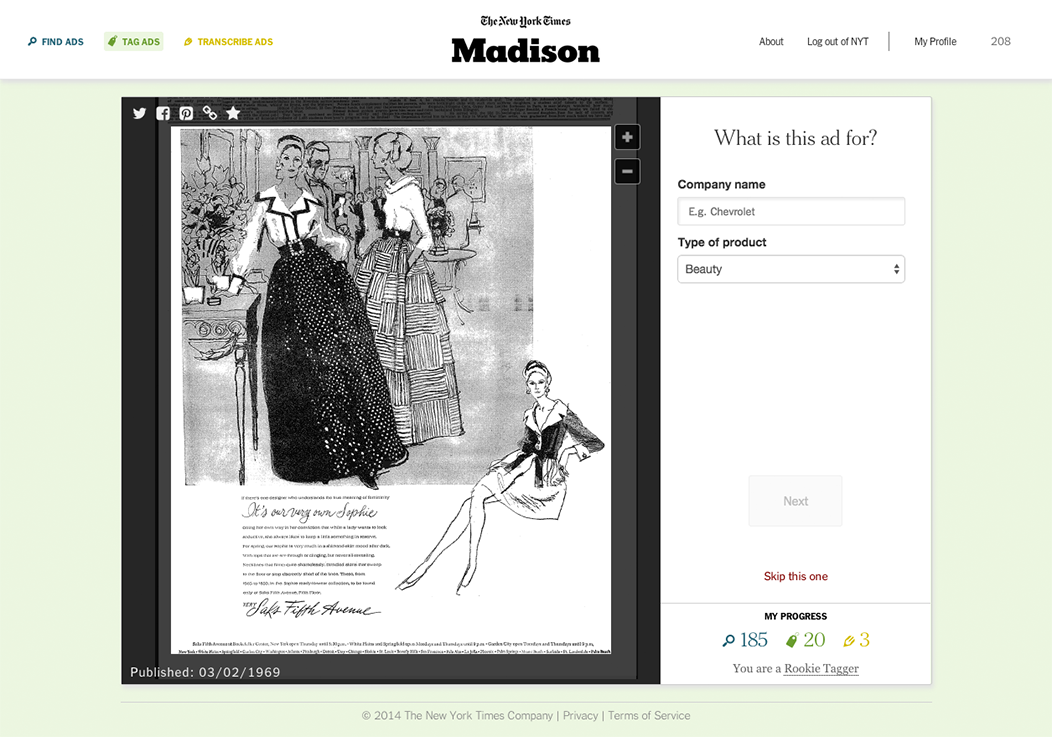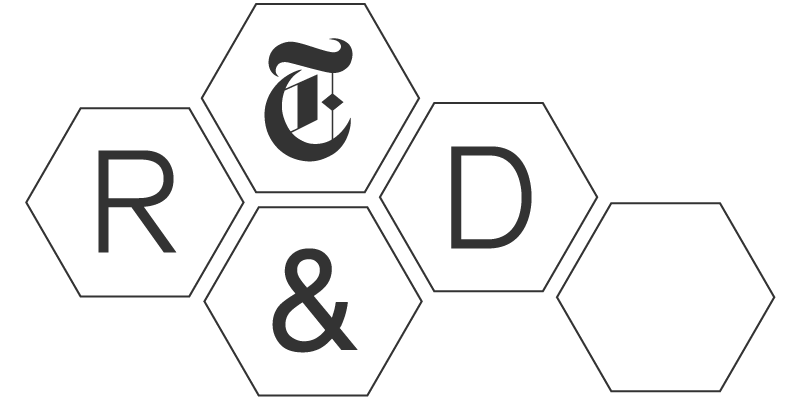
Madison (2014)

The New York Times’s century-and-a-half news archive is a rich and under-utilized resource, not only for news events but also as a reflection of cultural history. While news events and reporting give us a glimpse of one aspect of our past, the advertisements that ran alongside those news articles allow us a very different view. They act as commentary on technology, fashion, economics, gender relations and more, often in ways that are fascinating, funny or poignant.
Madison is a crowdsourcing project designed to engage the public with historical ads from The New York Times archive. The digitization of our archives has primarily focused on news, leaving the ads with no metadata–making them very hard to find and impossible to search for them. Complicating the process further is that these ads often have complex layouts and elaborate typefaces, making them difficult to differentiate algorithmically from photographic content, and much more difficult to scan for text. This combination of fascinating cultural information with little structured data provided the perfect opportunity to explore how crowdsourcing could form a source of semantic signals.
Madison's user experience centers on four design principles for crowdsourcing:
- Add more tasks rather than making one task very complex. Keeping tasks clear and streamlined meant that the user didn’t have to constantly switch contexts, and could knock out a few assignments in a row without having to think too much about it.
- Make the tasks self-explanatory. Building off the first concept, a task whose question is obvious is much easier to answer than one that requires looking at and interpreting instructions.
- Design for a variety of use cases. If the tasks are simple and modular, chances are they can be done on a variety of devices in a variety of situations. Our Find task works nicely on mobile, and can be done in a few seconds while waiting for the bus; our Transcribe task is much more oriented to someone at home on a desktop computer, looking for a way to spend 10 minutes.
- Permit anonymous contributions. Asking users to sign up first thing would give them an excuse to leave the site. By letting users contribute without logging in, we allow them to try it out and get into it before they commit to creating an account.
These choices formed the basis of Madison, and also shaped the platform underneath it: Hive. Hive is a modular, open-source framework for building crowdsourcing projects like Madison with any set of assets.
